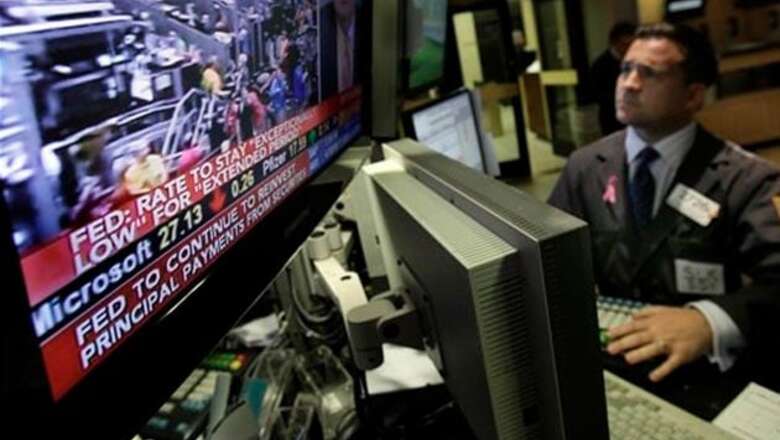
views
New York: In its latest move to jump start the sluggish recovery, the Federal Reserve announced it will pump billions into the economy.
The central bank will buy $ 600 billion in long-term Treasuries over the next eight months, the Fed said on Wednesday. The Fed also announced it will reinvest an additional $ 250 billion to $ 300 billion in Treasuries with the proceeds of its earlier investments.
The bond purchases aimed at stimulating the economy -- a policy known as quantitative easing -- will total up to $ 900 billion and be completed by the end of the third quarter of 2011.
Ever since the Fed first signaled back in August that it was considering a second round of monetary stimulus, dubbed QE2, investors have been preoccupied with speculating on how much the Fed would buy.
Now the verdict is in, and is roughly in line with forecasts. Mainstream estimates had predicted a total between $ 500 billion and $ 1 trillion.
"It was all largely as expected," said Calvin Sullivan, chief strategy officer at Morgan Keegan. "The markets are responding as one would expect."
Stocks seesawed between gains and losses, as investors digested the news. The real surprise was in the bond market, where yields on the longer term 10-year and 30-year rose, after traders realized the Fed's plan called for 91% of its purchases at shorter maturities than expected.
The Fed also reiterated its bearish view on the stalling economy, saying "the pace of recovery in output and employment continues to be slow."
Amid sluggish consumer spending, businesses have been reluctant to hire and the economy has grown at a snail's pace. At the same time, inflation is dangerously low, causing some economists to warn that the United States may even be flirting with deflation -- a debilitating drop-off in prices and demand.
The Fed has already kept the federal funds rate, a benchmark for interest rates on a variety of consumer and business loans, at historic lows near zero since December 2008. The Fed said Wednesday that it would continue to hold the rate at "exceptionally low levels" for an "extended period."
The federal funds rate is the central bank's key tool to spur the economy and a low rate is thought to encourage spending by making it cheaper to borrow money.
When already low rates failed to get consumers and businesses to spend, the Fed decided to resort to the more unconventional tool of quantitative easing, to lower interest rates even further.
But critics of QE2, including some Fed members, believe that too much monetary stimulus might lead to runaway inflation that could derail the economy, or future asset bubbles that could endanger economic stability over the long term.
The most outspoken voting member of the Fed, Kansas City Fed President Thomas Hoenig, was once again the lone dissent among policymakers, saying he believed the risks of additional securities purchases outweighed the benefits.
Other opponents have argued that it simply won't work. The Fed already made nearly $ 2 trillion in similar purchases during the Great Recession, and current low interest rates have not jolted spending, they say.
"I don't think this is going to make any difference at all," said Paul Ashworth, senior U.S. economist with Capitol Economics, who feels the plan is too small. "This is a slippery slope. Once you're on it, it's very hard to get off."
He predicts a repeat of what happened with the first round of quantitative easing two years ago. The Fed initially announced a $ 600 billion program in November 2008, but then four months later, increased that to $ 1.8 trillion, when it wasn't enough.
















Comments
0 comment